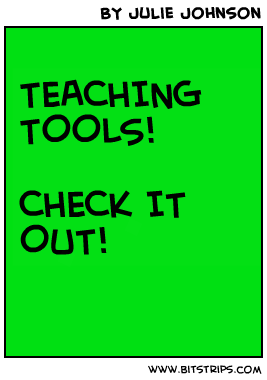This was a lesson for my Grade 3 class.
Step 1: Concept Attainment
During a previous lesson, I used concept attainment (providing yes
and no examples) to promote student discovery of what defines quadrilaterals (four-sided polygon with 4 angles). Students then used iPads to make a wide variety of quadrilaterals, encouraging creativity and exploration.
Step 2: Concept Formation
I took screenshots of the quadrilaterals that the students made and printed them off on paper.
We then did a 'concept formation' lesson. Students were asked to sort the quadrilaterals. Their only guidance was that they needed to sort the quadrilaterals into at least two groups and they must be able to explain their groupings. When students were done, they participated in a gallery walk to see and discussed how their classmates completed the task. Students sorted the shapes b:
-big and small
-shapes that looked more square and shapes that looked more triangular
-by rectangles, trapezoids and others
Step 3: Discussion of Parallel Lines
Next we gathered as a whole class in front of the projector.
I told students that we were going to sort the quadrilaterals by the number of parallel lines they had. We watched the beginning of a Khan Academy video (see below) to understand what parallel lines were and went over a few examples. We then sorted the quadrilaterals based on whether they had one set of parallel lines, two sets of parallel lines or no sets of parallel lines.
Step 4: Exploring Trapezoids vs Parallelograms
When we were done, I introduced the following definitions:
A quadrilateral with one set of parallel lines is called a trapezoid.
A quadrilateral with two sets of parallel lines is called a parallelogram,
Students were then given the below task using iPads:
(This is the link to find out more about the Geoboard App)
In the below example, a student was able to make a trapezoid where the opposite sides are different in length (purple). They tried the same with a parallelogram but discovered as soon as you made any one side longer, the parallelogram no longer has 2 sets of parallel lines (it becomes a trapezoid).
In this example, a student used additional bands to show this trapezoid has one set of
parallel lines and that the opposite sides are not the same length.
Here a student discovers that they can make opposite sides a different length with
trapezoids, but not parallelograms.
What I like about this lesson is how students discovered the math concepts, seeing for
themselves the difference between trapezoids and parallelograms. Math is so much more fun when it is a process of discovery. |
Welcome to Our Site!
BTW was created by Patrick & Julie Johnson, two Canadian educators with an interest in eduction & technology. This site showcases our interactive IBOOKS for students, but we also explore educational issues in our INQUIRY segments and share lessons/teaching ideas in our TEACHING TOOLS sections. Use the Labels section in the sidebar to navigate by topic or simply browse.
Sunday, April 19, 2015
TEACHING TOOLS: Using iPads for Geometry (The Geoboard App)
Subscribe to:
Post Comments (Atom)







No comments:
Post a Comment